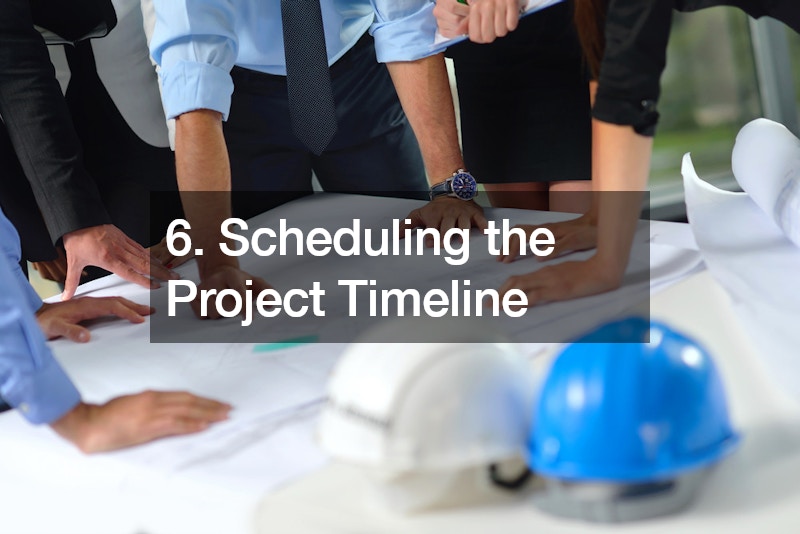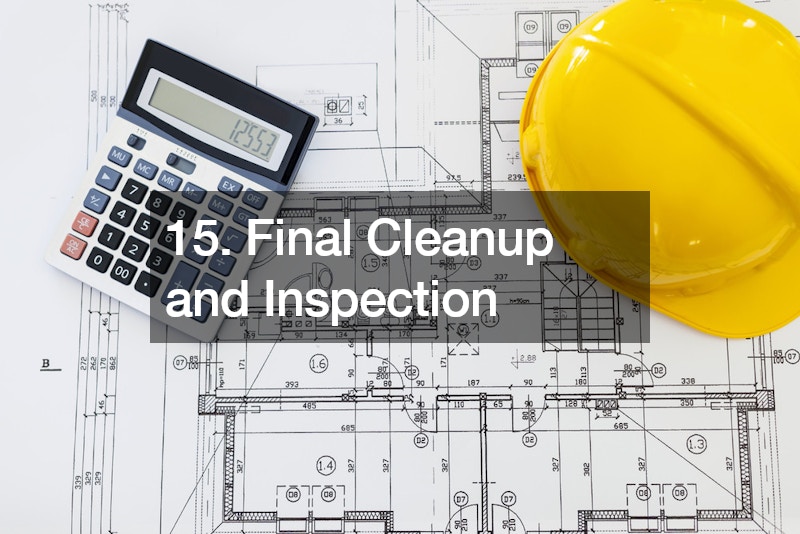When it comes to investing in your home, new roof construction is one of the most crucial projects you can undertake. A well-built roof not only protects your property from the elements but also enhances its overall curb appeal and value. However, to ensure a successful outcome of your roof replacement, proper planning and execution are essential.
1. Choosing the Right Roofing Material
One of the first decisions you’ll need to make when planning a roof construction is choosing the right roofing material. Factors such as durability, cost, and aesthetics should all be taken into consideration when selecting the best material for your project. From traditional asphalt shingles to metal roofing and clay tiles, each material type comes with its own set of benefits.
By consulting with a professional roofing contractor, you can weigh the pros and cons of each material and make an informed decision based on your specific needs and budget. Whether you prioritize longevity, energy efficiency, or low maintenance, there is a roofing material that is perfect for your roof construction.
Investing in high-quality materials upfront can save you money in the long run by reducing the need for roof replacement and frequent roofing repairs. By choosing a durable and long-lasting material, you can enjoy a beautiful and functional roof for years to come.

2. Hiring a Reputable Roofing Contractor
When it comes to new roof installation, hiring a reputable roofing contractor is essential for a successful outcome. Research and vetting potential contractors in your area can help you find a professional with the skills and experience needed to execute your project. Look for a contractor who is licensed, insured, and has a proven track record of delivering high-quality roofing services.
Before hiring a roofing contractor, be sure to ask for references and examples of their previous work. By speaking with past clients and inspecting completed projects, you can gauge the contractor’s level of expertise and professionalism. Additionally, don’t hesitate to ask about the contractor’s experience with new roof construction and any specialized services they offer.
Working with a local roofing contractor can offer several advantages, such as personalized service and quicker response times. Local roofing contractors are familiar with the area’s building codes and regulations, ensuring that your new roof installation complies with all necessary requirements. By entrusting your project to a reputable roofer, you can rest assured that your investment is in good hands.
3. Obtaining Necessary Permits
Before starting your new roof construction project, it’s important to obtain all necessary permits from your local building authority. Understanding the local building codes and regulations can help you avoid costly fines and delays during the construction process. Contact your city or county’s permit office to learn about the specific requirements for roofing projects in your area.
In some cases, your roofing contractor may assist you in obtaining the required permits for your project. By partnering with a professional who is familiar with the permit process, you can streamline the administrative tasks and focus on the actual construction work. Remember that failing to secure the proper permits can result in serious consequences, so it’s crucial to comply with all applicable regulations.
4. Setting a Realistic Budget
Setting a realistic budget is a crucial step in the planning process for new roof installation. Evaluate cost factors such as materials, labor, permits, and potential unforeseen expenses to create a comprehensive budget breakdown. By understanding the full scope of your project and setting realistic expectations, you can avoid financial stress and ensure a successful outcome.
Consulting with your roofing contractor can help you determine an accurate cost estimate for your new roof installation. Be transparent about your budget constraints and discuss any cost-saving options or financing plans that may be available. While it’s important to prioritize quality and durability when budgeting for your roof, there are often ways to optimize costs without compromising on value.
5. Planning for Proper Roof Ventilation
Proper roof ventilation is a critical aspect of roof construction that is often overlooked. Good ventilation helps regulate temperature and moisture levels in the attic, extending the lifespan of your roof and reducing the risk of costly repairs. Without adequate ventilation, heat and moisture can become trapped in the attic, leading to mold growth, structural damage, and energy inefficiency.
When planning your new roof construction, consider the different options for roof ventilation systems, such as ridge vents, soffit vents, and gable vents. Your roofing contractor can recommend the best ventilation solution based on your roof design and local climate conditions. Proper ventilation not only enhances the performance of your roof but also contributes to a healthier indoor environment and improved energy efficiency.

6. Scheduling the Project Timeline
Creating a realistic project timeline is essential for coordinating the various tasks involved in new roof construction. Factors such as weather conditions, material availability, and labor requirements can all impact the duration of your project. Work with your roofing contractor to develop a detailed schedule that outlines each phase of the construction process and sets clear deadlines for completion.
Consider any potential delays or setbacks that may arise during the project, such as inclement weather or unforeseen structural issues. By building flexibility into your timeline and allowing for buffer periods, you can adapt to unexpected challenges without compromising the overall progress of the construction. Regular communication with your contractor can help keep the project on track and ensure that deadlines are met.
7. Preparing the Work Area
Prior to the start of roof construction, it’s important to prepare the work area to ensure a safe and efficient working environment. Clearing debris, securing equipment, and marking off the construction zone are essential steps in readying the site for roofing work. By taking the time to clean and organize the work area, you can minimize accidents and streamline the construction process.
Ensure that all necessary safety measures are in place before work begins, such as providing proper protective gear for workers, securing ladders and scaffolding, and implementing fall protection protocols. By prioritizing safety on the job site, you can prevent injuries and create a conducive environment for productive work. Regular inspections of the work area can help identify and address any potential hazards before they escalate.
8. Removing the Existing Roof
Before installing a new roof, it’s often necessary to remove the existing roofing materials to ensure a clean and stable foundation. There are several methods for old roof removal, including tear-off and overlay techniques, each with its own set of advantages and considerations. Consult with your roofing company to determine the best approach for your specific project requirements.
The disposal of old roofing materials is an important aspect of the removal process that must be handled responsibly and in compliance with local waste disposal regulations. Your contractor can assist in coordinating the disposal of debris and recyclable materials to ensure proper waste management. By adhering to environmental guidelines and best practices, you can minimize the impact of your new roof construction on the surrounding ecosystem.
9. Installing the New Roofing System
Once the existing roof has been removed, it’s time to install the new roofing system that will protect your home for years to come. The process of installation involves laying down the chosen roofing material, ensuring proper alignment and attachment, and creating weatherproof seals to prevent leaks. Your roofing contractor will oversee the installation process and ensure that all work meets industry standards and manufacturer specifications.
Quality control measures are essential during the installation phase to verify that each component of the roofing system is installed correctly and functions as intended. Regular inspections and walkthroughs can help identify any issues or deviations from the project plan and address them promptly. By maintaining high standards of workmanship and attention to detail, you can achieve a durable and aesthetically pleasing roof for your property.

10. Addressing Potential Roofing Issues
During the course of new roof construction, it’s not uncommon to encounter potential roofing issues that may impact the progress of the project. Common problems such as structural damage, substrate issues, or material defects can pose challenges that need to be addressed promptly. By conducting regular inspections and staying vigilant for signs of trouble, you can identify and mitigate issues before they escalate.
Solutions to prevent roofing issues may include reinforcing weak areas, replacing damaged materials, or adjusting the installation technique to achieve better results. Your roofing contractor should be proactive in monitoring the construction process and implementing corrective measures as needed. By collaborating with your contractor and remaining communicative about any concerns that arise, you can maintain project momentum and avoid costly delays.
11. Inspecting the Finished Roof
After the new roof has been installed, it’s essential to conduct a thorough inspection to ensure that the work meets your expectations and complies with industry standards. Check for quality and workmanship by examining the roof surface, flashing details, and sealant applications. Address any deficiencies or discrepancies with your contractor to ensure that they are rectified before finalizing the project.
Inspecting the finished roof allows you to verify that all components are installed correctly and functioning as intended. Look for signs of damage, leaks, or defects that may indicate improper installation or material failure. By conducting a detailed walkthrough with your contractor, you can identify any areas that require attention and address them promptly to avoid future issues.
12. Maintaining Your New Roof
Once your new roof construction is complete, it’s important to establish a regular maintenance routine to protect your investment and prolong the lifespan of your roofing system. Tips for roof maintenance may include cleaning gutters, roof repair services, and trimming overhanging branches that could pose a hazard. By staying proactive and attentive to the condition of your roof, you can prevent costly repairs and extend its durability.
Scheduling regular inspections by a professional roofer can help identify any issues early on and address them before they escalate. Look for signs of wear and tear, water damage, or structural issues that may indicate the need for repairs or maintenance. By taking a proactive approach to roof care, you can avoid preventable damage and ensure that your investment remains secure and functional.
13. Understanding Roofing Warranties
As part of your new roof construction project, it’s essential to understand the different types of warranties available for roofing materials and installation services. Warranties provide assurance that your roof is protected against defects, premature failure, and other issues that may arise. Be sure to review the warranty terms and conditions carefully to understand what is covered and for how long.
When evaluating roofing warranties, consider factors such as coverage duration, exclusions, and transferability. Look for warranties that offer comprehensive protection against material defects, workmanship errors, and weather-related damage. Your roofing contractor can help explain the warranty options available and recommend the best coverage for your specific needs and budget.
14. Dealing with Weather Delays
Weather delays are a common challenge that can impact roof construction projects and extend the timeline for completion. Strategies for handling weather-related setbacks may include monitoring weather forecasts, adjusting work schedules, and implementing contingency plans to mitigate delays. Communicate regularly with your roofing contractors to stay informed about weather conditions and any potential schedule adjustments that may be necessary.
By planning ahead and being flexible with your project timeline, you can navigate weather delays and ensure that your roof construction stays on track. Remember that safety is paramount when working in inclement weather conditions, and it’s important to prioritize the well-being of workers and the integrity of the project. By remaining adaptable and proactive in managing weather-related challenges, you can overcome delays and achieve a successful outcome.

15. Final Cleanup and Inspection
After the construction work is complete, it’s time to conduct a final cleanup and inspection to ensure that the work site is safe, organized, and free of debris. Clearing away any leftover materials, tools, and equipment helps restore the area to its original condition and minimizes the risk of accidents or damage. Perform a final walkthrough with your contractor to verify that all work meets your standards and expectations.
Embarking on a roof construction project is a significant undertaking that requires careful planning, attention to detail, and collaboration with experienced professionals. By following the outlined tips and best practices, you can ensure a successful outcome and enjoy the benefits of a durable and beautiful roof for your home. Remember to prioritize quality, safety, and long-term value in all aspects of your new roof construction project.
